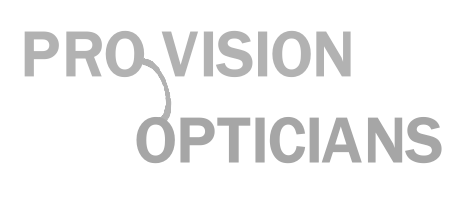GLAUCOMA
Overview
Glaucoma is a group of eye diseases in which the optic nerve, which connects your eye to your brain, is damaged by the pressure of the fluid inside your eye. This may be because the pressure is higher than normal, or because the nerve is more susceptible to damage from pressure. This many affect one or both of your eyes.
Because you often cannot feel the pressure, and the damage happens slowly, you may not know you have glaucoma until a lot of damage has been done. That damage cannot be put right, so it is particularly important that you find out early. The best way to make sure of this is to have a regular eye examination with an optometrist. If there are any signs which could indicate glaucoma, the optometrist will refer the patient for further investigation at the hospital, where a diagnosis can be made and treatment given if necessary.
If you have glaucoma and don't treat it, your eyesight will gradually get worse, and you could eventually go blind. The good news is that treatment with eye drops may stop it getting worse.
Who gets Glaucoma?
Anyone can develop glaucoma. The risk of developing glaucoma goes up if you are :
- aged over 40
- very short- sighted
- of African or Caribbean origin
- closely related to someone with glaucoma
Glaucoma is often hereditary, so close relatives of people with glaucoma have a greater risk and therefore need annual check-ups. The risk of glaucoma goes up as you get older and the NHS pays for check-ups for those over 40 years of age who are the parent, child or sibling of someone with glaucoma.
How is glaucoma detected ?
Because the early stages of glaucoma do not cause symptoms, the best way to catch it early is to have regular eye examinations.
There are three main tests to see if you have glaucoma. At Provision Opticians we perform all of them.
The first one is where the optometrist looks at the nerve at the back of your eye using a special torch called a opthalmoscope or a machine called a slit lamp. We may also take a photograph of the nerve. This can be useful for future visits, to help them see if things have changed.
The second test is where the optometrist measures the pressure inside your eye. This may be done by gently blowing a puff of air at your eye, or by numbing your eye with drops and then gently pressing an instrument called a tonometer against it. The test does not hurt, although the puff of air may make you jump a bit.
The third test is where the optometrist tests how wide your visual field is - how far you can see around you when you are looking straight ahead.
Sometimes you can have glaucoma even if you have low pressure, which is why you will usually have at least two of these three tests. If the results are not clear, you may be asked to do one or more of the tests again on a different day.
What will happen if I have glaucoma?
If the optometrist suspects that you may have glaucoma, he or she will refer you to an apthalmologist. If you do have glaucoma, you will be given eye drops to use every day. They will reduce the pressure and help control the build-up of fluid. They will not hurt.
Because you will not feel different in any way, you will not be able to tell that the treatment is working. This is why it is very important that you :
- go to your follow-up appointments; and
- keep on using drops. If you find it hard to use eye drops, you can get a special bottles or holders to make it easier.
In small number of cases, an ophthalmologist may recommend that you have an operation to drain away the fluid.
There is no cure for glaucoma but it can be treated effectively, normally with eye drops. any existing eye damage will probably be permanent, but your sight could get much worse if you stop the treatment. It is very important that you use the eye drops every day, even if you cannot tell that they are helping.
Closed- angel glaucoma
This is a type of glaucoma where the drainage channels of your eye are blocked or damaged in some way. Sometimes the increased pressure can come and go,and some people get short burst of pain or blurred vision. This can happen when your pupil gets bigger, so it may be at night or when you are in dark area ( like in the cinema). Other symptoms are an ache in the eye which comes and goes, red eye, or seeing haloes around lights. Or it can be a bit like looking through a haze or mist.
People who are more likely to get closed-angle glaucoma are people over 40, women, people of Asian origin, people with family history of closed-angle glaucoma, and people who are very long-sighted.
For more information visit:
www.nhs.uk
www.glaucoma-asspciation.com
www.lookafteryoureyes.org

